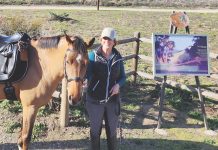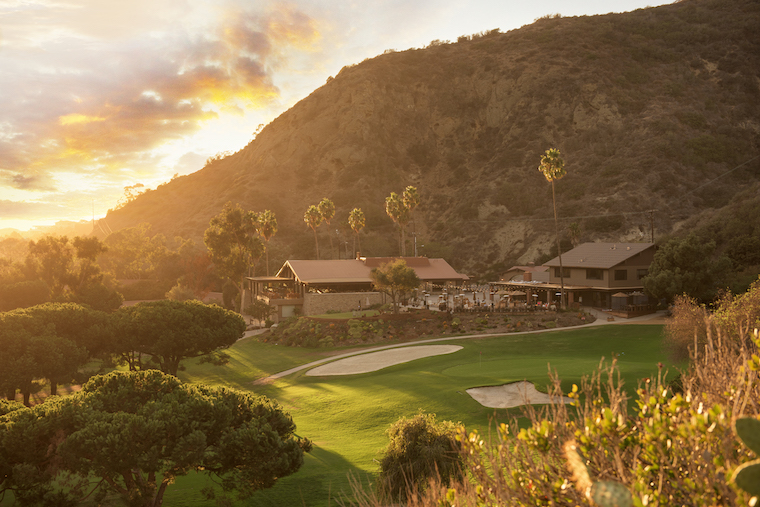
The Ranch at Laguna Beach is taking serious steps to help the environment and the community.
By Larry Urish
As a founding member of Beyond Green, a worldwide group of hotels, resorts and lodges that make sustainable practices a priority, The Ranch at Laguna Beach has many eco-friendly efforts in place.
From using recycled water for irrigation to replacing plastic room key cards with bamboo ones and donating excess food to groups serving the needy, the resort’s sustainable methods span the spectrum. And, while the Beyond Green consortium was just announced in the fall, The Ranch’s environmentally conscious approach began taking root several years ago.
Since new owners took the helm of the resort in 2013, they have made sustainability and community a priority, says Kurt Bjorkman, The Ranch’s general manager. “This was one of the first discussions we had [after the ownership change],” he says.
That green approach now runs through the resort’s operations to make a difference locally and for the planet.
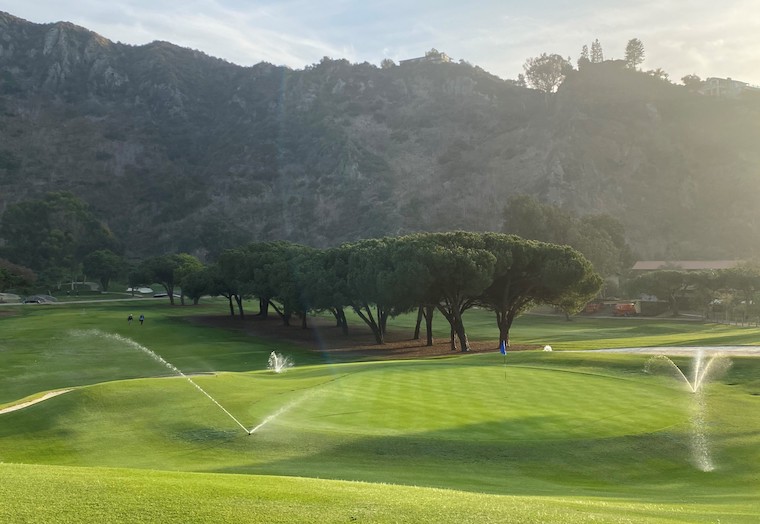
Water Reuse
By utilizing reclaimed, or recycled, water at The Ranch’s Ben Brown’s Golf Course and throughout the property grounds since 2015, the resort has saved an average of 20 million gallons of potable (drinkable) water each year, Bjorkman says. Repurposed water, which is also utilized by other stakeholders to irrigate parks, street median landscaping and the like, can be stored by the local water agencies for use during the inevitable droughts that occur in an arid climate. “With the reclaimed water, we can continue to operate during the drought and not let turf die or make huge adjustments,” he says.
However, irrigating with reclaimed water is more challenging than using potable water, Bjorkman notes. Reclaimed water’s total dissolved solids must be monitored constantly to ensure that it doesn’t kill the grass on the golf course. “We measure these levels with handheld units we stick into the ground—every fairway, every green, every day,” he says. “If we don’t do that, our course can die very quickly.”
Another challenge is the cost of sprinkler heads designed for use with reclaimed water. “They have to be a specific type that operate with a higher level of mineral content,” Bjorkman says. “We must change them out more often, and they tend to break a lot faster. It’s a massive ongoing expense.”
The Ranch’s reclaimed water comes from the South Coast Water District’s Aliso Creek Water Reclamation Facility, located about a mile from the resort. The process starts with the South Orange County Wastewater Authority’s Advanced Wastewater Treatment system at the Coastal Treatment Plant.
Then, the nearby reclamation facility takes the treated water and filters out total dissolved solids that could negatively affect the golf course’s grass. Water entering the facility is sent to an ultrafiltration unit that uses low-pressure membranes to remove bacteria, viruses and suspended solids. A reverse-osmosis system, the next step in the water’s journey, removes insecticides, antibiotics, soluble solids and metal ions.
Next, carbon dioxide is reduced in a 21-foot-tall unit that adjusts the pH of the treated water to a level of 7.6. And, finally, it is disinfected in chlorine-contact basins before being piped to a 2 million-gallon tank to be stored for distribution.
The Ranch has received great feedback because of this water-saving effort. “It’s been exceptional,” Bjorkman says. “It’s one of those rare win-win stories.”
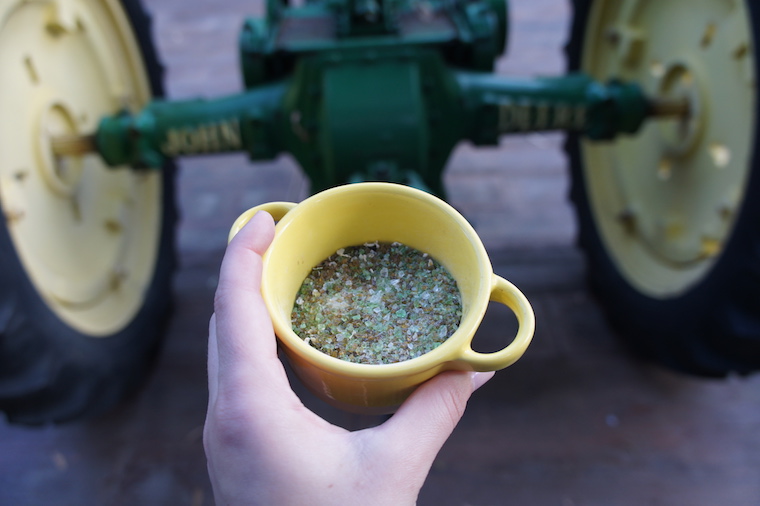
From Glass to Sand
Water isn’t the only thing being recycled at The Ranch. Of the glass bottles used at the resort, 98% are crushed on-site and mostly used to top off the golf course’s bunkers. “[The sand grains] are identical to the type you find at natural ocean beaches,” Bjorkman says, noting that these efforts have reduced The Ranch’s glass waste by 90%.
The resort could teach the rest of the country a thing or two about recycling. According to the U.S. Environmental Protection Agency, only 31.3% of all glass food and beverage containers were recycled in 2018.
At The Ranch, once bottles are crushed, the fragments are put into a high-speed sifter. The process is done with a GLSand machine, and The Ranch was the first hotel in the United States to own one. “It looks like a chromed-out Star Wars robot, like R2-D2’s brother,” Bjorkman says. “It vibrates at sonic levels and sifts it into different granule sizes—everything from larger pieces, like what’s in a sandbox, to something like talcum powder.”
Some pieces come out larger than sand, like pebbles-size pieces, and can’t be completely ground down due to impurities, so they are used for road patching, filtration systems and sandbags. But the majority of what is crushed is ground down to sand to replenish Ben Brown’s Golf Course bunkers. Some 50 tons of this sand was created in 2019 (less in 2020 because less glass was used on property due to the pandemic), Bjorkman says.
Of course, the resort’s glass-into-sand efforts can’t fill every bunker on the golf course; although bunker sizes vary, an average one contains about 35 tons of sand. However, over the year, The Ranch occasionally needs to top off its bunkers, which can diminish because of use, settling and weather. Last year, the resort didn’t need to buy any extra bunker sand—the glass crushing system provided all the sand that was needed.
“[Turning our used glass into sand] helps reduce our carbon footprint,” Bjorkman adds, “since the bottles don’t have to be picked up by trucks and transported to recycling facilities.”

Sustainable Food Service
In addition to helping the environment, The Ranch aims to prevent food waste, too. In this effort, the resort is a member of Chefs to End Hunger, a nonprofit that furnishes meals to the hungry by redistributing excess prepared food—which would otherwise get thrown out—to charitable groups that serve the meals. The culinary staff at The Ranch provides extra food from its operations throughout the property.
“Any item that we can return through this program—things that meet our safety criteria—we return,” Bjorkman says. For example, items that are only slightly past their use by or sell by date. Along with excess prepared food, “we’ll notice some produce that’s going to turn but is still edible,” he adds. Donated food is stored in boxes provided by Chefs to End Hunger, which are placed in a cooler on site until a driver comes to pick them up.
In addition, The Ranch’s Harvest restaurant works with Orange County fishermen to obtain the freshest seafood. Harvest serves only those ocean species given the go-ahead by the James Beard Foundation’s Smart Catch program and the Monterey Bay Aquarium’s Seafood Watch. Catch method (hook and line versus bottom trawling, for example), country or region and body of water are also taken into account when determining what to responsibly serve.
The Seafood Watch list is regularly changing based on the season and ocean environment; Harvest restaurant staffers check it regularly. “It’s a lot more expensive to buy [seafood] responsibly than it is to buy from an enterprise-based fish provider,” Bjorkman says. “We could be getting our fish from overseas and have no idea how it was caught, treated or processed. Doing that would be a lot cheaper, but we choose to do the right thing.”
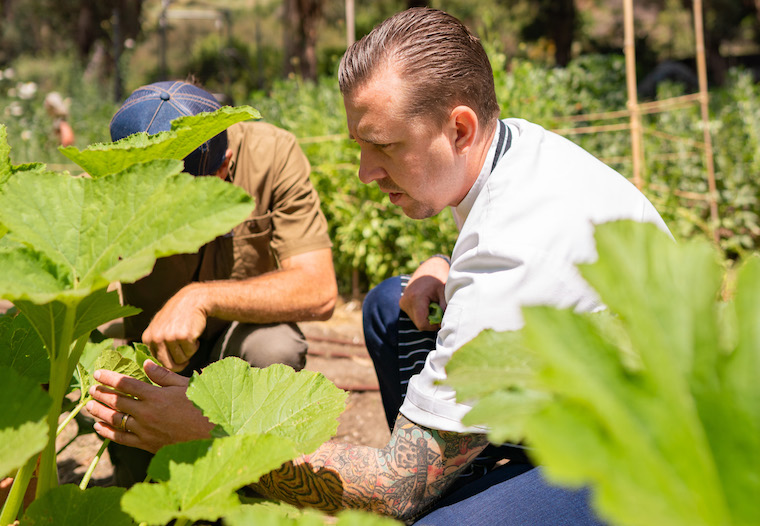
Committed to Help
The Ranch at Laguna Beach also operates several other programs that assist the community and the environment.
-
Guests at the resort are given biodegradable bamboo keys that can be returned or kept as souvenirs, keeping 25,000 plastic keys out of landfills per year.
-
Housekeeping services collects and recycles discarded soap as part of the Clean the World program, a worldwide nonprofit that repackages and distributes it to those in need.
-
Since December 2015, volunteers at The Ranch have “adopted” a 3/4-mile stretch of the Aliso Creek Channel in Mission Viejo. Thus far, they’ve removed an estimated 2,500 pounds of trash there.
-
Guests who book their stay at The Ranch through the socially conscious hotel-booking platform Kind Traveler get special rates and $10 per night is donated to the Ocean Institute or a nonprofit of their choice.
-
The resort has set aside a half-acre of land for an organic garden used by Harvest restaurant for some of its ingredients. Ryan “Farmer Leo” Goldsmith, a staffer at The Ranch, provides garden tours on Thursday and Saturday mornings (the schedule can change based on the time of year).
-
The Ranch also composts all of its wet food waste (except for proteins) to provide the nutrients needed to keep the on-site garden free of pesticides and chemical fertilizer.
-
Ben Brown’s was the only golf course in the state to be certified by the Geo Foundation’s OnCourse program, thanks to its earth-friendly practices.




